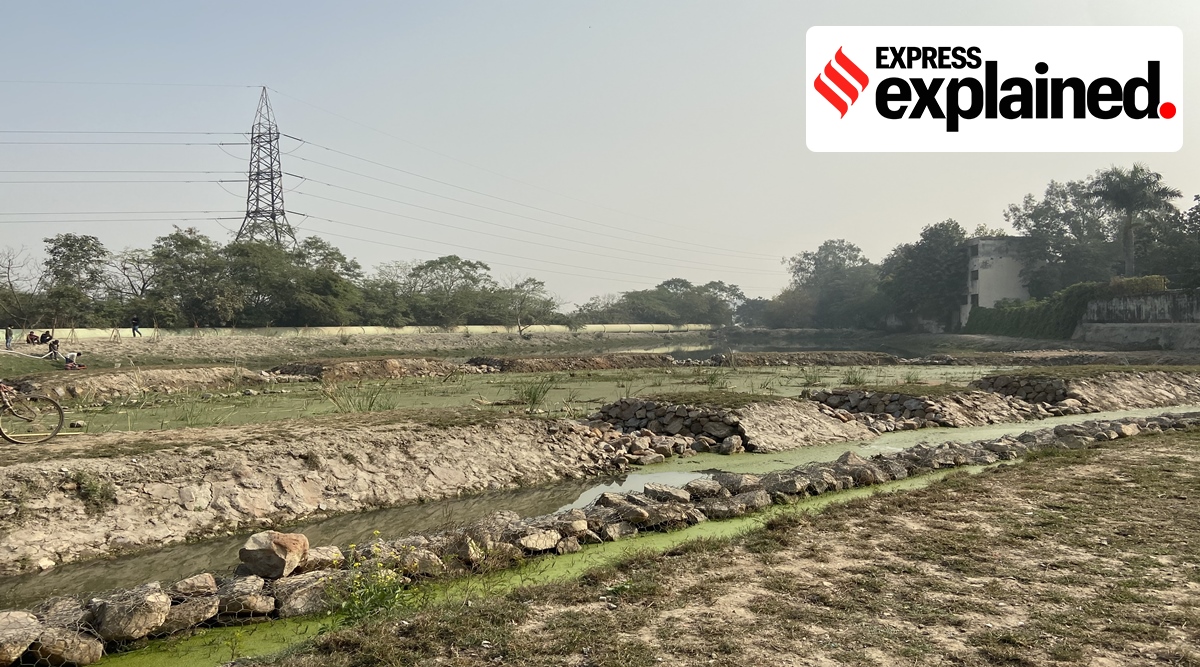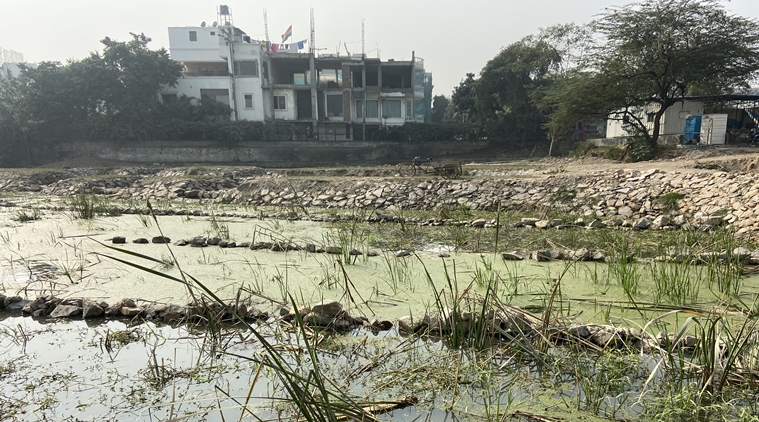A unique sustainable experiment is under way in Delhi, where a ‘constructed’ natural feature brings hope of reducing the need for expensive sewage treatment plants, with issues of capacity and utility.
To reduce some load of untreated sewage that flows into the Yamuna, authorities in Delhi are planning a method to naturally treat around 1,500 million litres per day (MLD) of wastewater that goes into the river.
A unique experiment
At the South Delhi Biodiversity Park, being developed by the Delhi Development Authority (DDA) on about 200 hectares of land behind Kalindi Colony, Delhi University professor CR Babu is making 11 constructed wetland systems.
These constructed wetland systems will use boulders and a variety of plants to naturally treat sewage from 25 drains, stretching from Okhla to Kalindi Colony, before it enters the river.
Also in Explained | Reading the new US policy on Tibet: snubs to China on Dalai Lama, rivers
Prof Babu, who heads Delhi University’s Centre for Environmental Management of Degraded Ecosystems (CEMDE), successfully used the constructed wetland system to revive a lake at Neela Hauz biodiversity park in the city in 2016.
At the South Delhi Biodiversity Park, one out of 11 constructed wetlands started functioning on December 18 this year, treating about 15 MLD of waste from the Kilokari drain.
Also in Explained | The controversy surrounding Nobel Laureate Amartya Sen’s house in Santiniketan
How treatment works
The method involves a three-step process, which does not require electricity. At the mouth of the drain, a team of scientists led by Prof Babu have made a one-acre wide wetland from boulders and plants.
? JOIN NOW ?: The Express Explained Telegram Channel
The drain opens into an oxidation pond, which is the first step of the treatment process. Here the solid material in the waste is removed from a wire mesh and atmospheric oxygen dissolves in the water.
The water then travels further and passes through channels and small ridges made from boulders, which creates turbulence and causes aeration.
Also in Explained | What is the ‘balloon boy hoax’, for which a US couple was pardoned recently
Aeration brings water and air in close contact, introducing small bubbles of air which rise through the water and remove dissolved gases in it.
“Higher turbulence means better oxygen saturation and better quality of water. Waterfalls have maximum oxygen saturation and, therefore, have very good water quality,” Prof Babu says.
The final step in the treatment process happens when water passes through 25 species of plants — including typha, phragmites, ipomoea and cyprus — which are effective in the treatment of heavy metals, including arsenic.
Yasir Arafat, a scientist working under Prof Babu at the CEMDE, said, “Raw sewage is food for these plants and they draw nutrients from it. Over time, they will grow from this nutrition.”
Re-charging the river
Treated water is released into the river through wetlands stretching from Dhobi Ghat in Okhla to DND flyway near Kalindi Colony. Prof Babu’s team will check the quality of water being released into the river through this constructed wetland.
The same process has increased the concentration of dissolved oxygen (DO) at Neela Hauz biodiversity park lake — which used to receive untreated sewage through drains from nearby areas — to 4 milligrams per litre, close to the criteria for DO required for propagation of fish in water.
“For a very long time, the constructed wetland system has been ignored by civil engineers, who have been keen about sewage treatment plants (STPs). You need a lot of energy to run STPs and they will not function if their capacity is less or higher than the quantity of sewage… The constructed wetland is a viable alternative to them,” Prof Babu said.
Source: Read Full Article



